There are several solutions for this problem. The one in the following screen recording, is based on drawing png images as movable shapes; it uses the idea that I've explained in How to drag and move shapes in C#. Basically there's only one control -the drawing surface, and all the other stuff are movable drawings.
- You can use any image for the pieces by passing an Image to the ImageShape
- You can modify the size of the Pieces by setting Height of the shape
- It supports snapping to the grid
- You can customize the texture, easily by setting the BackgroundImage of the drawing surface
- You can change the grid size, by setting GridSize property of the drawing surface
- You can change the Color of White and Grid grids, by assigning the color to WhiteColor and BlackColor
It's of course a quick example showing how to draw movable objects, including png images keeping their transparency. You know how to improve it :)

Drawing and moving shapes - Chess pieces
using System.Collections.Generic;
using System.Drawing;
using System.Drawing.Drawing2D;
using System.Drawing.Text;
using System.Linq;
using System.Windows.Forms;
public interface IShape
{
bool HitTest(Point p);
void Draw(Graphics g);
void Move(int dx, int dy);
Point Location { get; set; }
}
public class ImageShape : IShape
{
public int Height { get; set; } = 100;
public Point Location { get; set; }
private Image _image;
public ImageShape(Image image)
{
_image = image;
}
public void Draw(Graphics g)
{
var r = new Rectangle(Location, new Size(Height, Height));
r.Inflate(-5, -5);
g.DrawImage(_image, r);
}
public bool HitTest(Point p)
{
return new Rectangle(Location, new Size(Height, Height)).Contains(p);
}
public void Move(int dx, int dy)
{
Location = new Point(Location.X + dx, Location.Y + dy);
}
}
public class DrawingSurface : Control
{
public List<IShape> Shapes { get; private set; }
public int GridSize { get; set; } = 100;
public Color WhiteColor = Color.FromArgb(200, Color.White);
public Color BlackColor = Color.FromArgb(120, Color.Black);
IShape selectedShape;
bool moving;
Point previousPoint = Point.Empty;
public DrawingSurface()
{
DoubleBuffered = true;
ResizeRedraw = true;
Shapes = new List<IShape>();
}
protected override void OnMouseDown(MouseEventArgs e)
{
for (var i = Shapes.Count - 1; i >= 0; i--)
if (Shapes[i].HitTest(e.Location))
{
selectedShape = Shapes[i];
break;
}
if (selectedShape != null)
{
moving = true;
previousPoint = e.Location;
Invalidate();
}
base.OnMouseDown(e);
}
protected override void OnMouseMove(MouseEventArgs e)
{
if (moving)
{
var dx = e.X - previousPoint.X;
var dy = e.Y - previousPoint.Y;
selectedShape.Move(dx, dy);
previousPoint = e.Location;
this.Invalidate();
}
base.OnMouseMove(e);
}
protected override void OnMouseUp(MouseEventArgs e)
{
if (moving)
{
int i = (e.X / GridSize) * GridSize;
int j = (e.Y / GridSize) * GridSize;
selectedShape.Location = new Point(i, j);
selectedShape = null;
moving = false;
this.Invalidate();
}
base.OnMouseUp(e);
}
protected override void OnPaint(PaintEventArgs e)
{
var g = e.Graphics;
g.InterpolationMode = InterpolationMode.High;
g.SmoothingMode = SmoothingMode.HighQuality;
g.TextRenderingHint = TextRenderingHint.AntiAliasGridFit;
g.CompositingQuality = CompositingQuality.HighQuality;
foreach (var shape in Shapes.Except(new[] { selectedShape }))
shape.Draw(g);
if (selectedShape != null)
selectedShape.Draw(g);
}
protected override void OnPaintBackground(PaintEventArgs e)
{
base.OnPaintBackground(e);
var g = e.Graphics;
using (var w = new SolidBrush(WhiteColor))
using (var b = new SolidBrush(BlackColor))
for (int i = 0; i < 8; i++)
for (int j = 0; j < 8; j++)
g.FillRectangle((i + j) % 2 == 0 ? b : w,
i * GridSize, j * GridSize, GridSize, GridSize);
}
}
To add pieces:
private void Form1_Load(object sender, EventArgs e)
{
this.drawingSurface1.Shapes.Add(new ImageShape(
Properties.Resources.KingWhite) { Location = new Point(0, 0) });
this.drawingSurface1.Shapes.Add(
new ImageShape(Properties.Resources.kingBlack) { Location = new Point(0, 100) });
}


